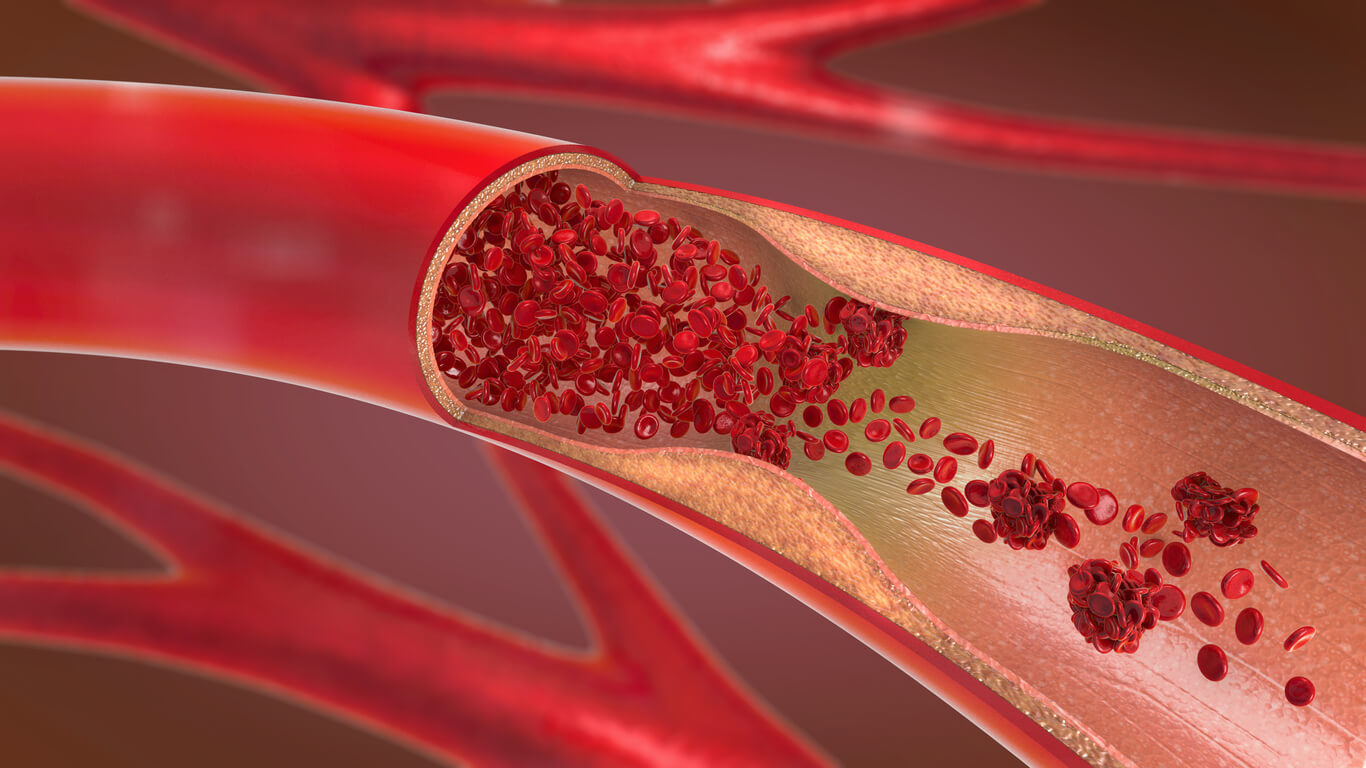On average, approximately 900,000 cases of potentially fatal and deadly blood clots are reported each year. More than 600,000 cases of non-fatal deadly blood clots are reported annually, of which, 40% are blood clots in the legs.
Despite these terrifying statistics, fewer than 1 in 4 people know the signs and symptoms of blood clots.
To increase awareness, this article will summarize the potential causes of blood clots in the legs along, including risk factors, and what you can do to prevent them.
What Is a Blood Clot?
When our body sustains an injury, our blood will turn into a gel-like substance that will act as a plug to stop the bleeding from the cut and injured blood vessel.
If our bodies didn’t trigger this reaction, the vessels in our body would continue to bleed. This type of clotting is a healthy and vital response to any injury imposed on our bodies.
Unfortunately, blood may also clot inside our veins, which may lead to very serious conditions such as Deep Vein Thrombosis (DVT) and Pulmonary Embolism (PE).
Deep Vein Thrombosis (DVT)
Deep Vein Thrombosis occurs when a blood clot forms in a deep vein, typically in the arms and legs.
Symptoms of DVT:
- Swelling in the leg affected by a blood clot
- Throbbing pain in the leg
- Muscle spasm in the leg commonly known as a Charley horse
- Tenderness in the affected area
- Bluish-reddish skin discoloration
- Burning sensation
- The affected area is warm to the touch
Should you be experiencing any of these symptoms in your legs, contact your doctor as soon as possible. It is possible that you may need immediate treatment.
What Does a Blood Clot in a Leg Look Like?
Since blood clots in the legs occur in deep veins, physical evidence is often hard to identify. It may begin as a pain in your lower leg without any apparent vein or discoloration.
As it progresses, it may cause skin discoloration, swelling, and a feeling of warmth in the affected area.
A more advanced case of blood clots may trigger symptoms of a pulmonary embolism (see below).
What Causes Blood Clots in Legs?
Blood clots can affect anyone, they do not discriminate.
There are a few factors known to increase your chances of developing one:
- Approximately 50% of blood clots occur during or soon after surgery or a hospitalization
- Being immobile for a lengthy period of times, such as bed rest or long airplane travel
Additional Risk Factors Associated With Blood Clots in Lower Legs
- Recent major surgery or hospital stay
- Major trauma from an accident or fall
- Leg paralysis
- Aging (people over 65 are more susceptible to blood clots in legs)
- Chemotherapy
- Bone fractures
- Pregnancy or recent birth
- History of blood clots
- Obesity
- Hormonal imbalances
- Heart failure
- Cardiovascular diseases
- Blood disorders
- Circulatory issues
Best Way to Prevent a Blood Clot in Your Leg
There are several ways you can help prevent or minimize your risk of developing a blood clot:
- Educate yourself on the symptoms and know your risks
- See your doctor as soon as you recognize any signs and symptoms of a blood clot
- Speak to your doctor about blood clots before any surgery or hospitalization
- Inform your doctor if you have a history of blood clots or known risk factors
One of the safest steps is to consult a vascular surgeon. They will run the necessary tests to identify whether you need immediate intervention or not.
Ways to Lower Your Risk of Developing a Blood Clot in Your Leg
There are additional ways to lower your risk of developing blood clots:
- Talk to your doctor about using compression stockings
- Consult a specialist regarding blood thinners
- Shed the extra pound if you are obese
- Stay active and exercise regularly
- If you have to sit or stand in one position, make sure to move around every hour or two for approximately ten minutes
- Take other measures to protect your health measures, such as keeping an eye on diabetes, heart disease, and other conditions that may put you at increased risk
Pulmonary Embolism (PE)
As noted above, deep vein clots may lead to Pulmonary Embolism.
What Is A Pulmonary Embolism?
A pulmonary embolism is caused when a DVT breaks loose and travels to the lungs.
Since the vessels in the lungs are much smaller than the deep veins in the legs, the clot is unable to pass through, creating a blockage.
The blockage prevents blood from flowing to the lungs, causing a pulmonary embolism.
Symptoms that signal a PE include:
- Sudden, sharp chest pains that may worsen when you try to breath
- Shortness of breath
- Elevated heart rate
- Dizziness
- Unexplained coughing, sometimes accompanied by bloody mucus
- Pulmonary embolisms can be extremely dangerous and even fatal if immediate action isn’t taken. If any of these symptoms appear, don’t waste any time and call an ambulance
Final Thoughts
Blood clots should never be overlooked because of the serious nature of both these conditions and the potentially fatal outcomes of ignoring them. Testing is painless and is typically performed by ultrasound along the legs and arms.
Our providers are board-certified vein specialists who can help determine whether you are at risk for deep vein blood clots in your legs. Scheduling is easy, allowing you to be proactive in protecting your health. Contact Vein Envy today!





.jpg)



.png)
